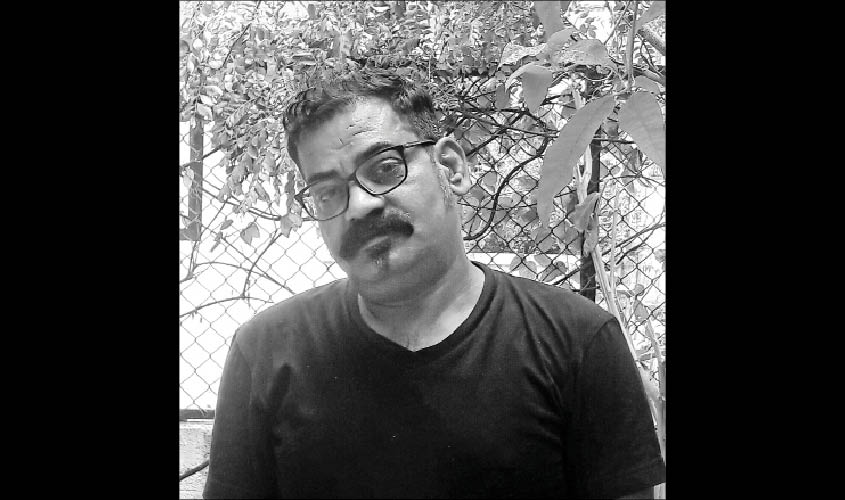Nashik-based artist, Pandit Bhila Khairnar is among the very few Indian exponents of the Rothko-inspired colour-field painting movement. His artworks are part of a solo show being hosted at Delhi’s Threshold Gallery, writes Bhumika Popli.
The series of abstract paintings, by the Nashik-based artist Pandit Bhila Khairnar, makes you think about dusk. There are shades of orange, yellow, pink, black, blue and brown in these oil-on-canvas paintings. The artist has managed to capture all the colours of the evening sky over a city, the accurate composition of light just before darkness takes over.
These colours, in various combinations and shades, take up the entire surface of his canvases. Look at any of his works for a long time and you will begin to see a seamless blend of shades. His paintings belong to the colour-field movement of art, a category which theoretically falls under abstract expressionism, with 1940s American painters such as Mark Rothko, Barett Newman and Clyfford Still among its best-known representatives.
Khairnar’s paintings, which are part of a solo exhibition being hosted at Delhi’s Threshold Gallery, are true to the abstract expressionist credo of rejecting the figurative in favour of the symbolic. It’s the symbolism of these artworks that sends the viewer into a zen-like mental state.

“The concept, according to me, emerges from neti-neti, a term from the Sanskrit language which translates into ‘not this’, ‘not this’, till you arrive at the core of what is actually relevant,” says Tunty Chauhan, director, Threshold Gallery. “Look at his paintings for a long time and you see circles emerging from the paintings.”
According to Chauhan, it is important to show such artworks in public, as an antidote to gimmicky art. Khairnar makes a very modern statement with his work. His paintings, Chauhan adds, “are very meditative in nature”.
At what point does an artist finish with an abstract painting? How do you get to know when a work-in-progress is complete? I ask Khairnar. “When I feel a certain gratification after looking at my work,” the artist responds, “similar to experiencing a fresh breeze in an idyllic landscape, I put the brush down.”
It was his idea of an idyllic landscape, inspired perhaps by the scenic beauty of his hometown Nashik, which became a major catalyst in Khairnar’s growth as a colour-field painter. The city of his childhood, a landscape of ancient temples and ruins, informed his artistic sensibility. Such was his attachment to Nashik that even after spending a good 25 years in Mumbai, Khairnar chose to relocate to Nashik in 2013.

In Mumbai, he studied at the L. S. Raheja School of Art, where he delved into theories of colour-field abstraction. He says, “In my student years, my figurative works didn’t get much appreciation but my techniques of using colours were praised. And when I saw paintings by Indian artists, such as V.S. Gaitonde, Natvar Bhavsar, Rajendra Dhawan and Sohan Qadri, I used to feel confident.”
But Khairnar prefers not to label his work as abstract. “I don’t believe in names, in terms such as figurative and non-figurative. I don’t see my paintings as abstract paintings. If I have painted something on my canvas by looking at a real thing like nature, how can that be categorised under abstraction?”
The artist is also inspired by the phases of the day. He says, “My works represent mornings and evenings. I am fascinated by these times of the day, making them a constant in my work, which is not non-representational but captures the infinite. I bring a family of one colour to most of my works.”
There are many who are still unaware of colour field being one of the important genres of painting. On this, Khairnar says, “Looking at my paintings, people have many a time questioned me on the art form itself. They have said, ‘What’s so special about your artwork? Is this even a painting?’ And they also have a confident answer to their own question, ‘Anyone can do it, even I can do it with no experience in painting.’”
“What happens then? What do you tell them?” I ask him.
“I give them a colour and ask them to copy my work, give me several layers which ultimately should show the colours of the sky, but when they cannot, they understand,” says the artist.
‘Cosmic Balance’ is on view at Delhi’s Threshold Gallery till 5 September.

